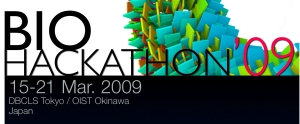| 10 | | 1. Pick a pathway of a specific organism, say Glycolysis / Gluconeogenesis pathway of Homo sapiens (human). |
| 11 | | 1. Get all the amino acid sequences of that pathway component. |
| 12 | | 1. Run blast for each sequence against UniProt(SwissProt / TrEMBL). |
| 13 | | 1. Group the blast results according to biological species (s1, s2, ..., sn). |
| 14 | | |
| | 12 | === Part I === |
| | 13 | 1. Pick a pathway of a specific organism, say Glycolysis / Gluconeogenesis pathway of Homo sapiens (human). |
| | 14 | 1. Get all the amino acid sequences of that pathway component (c''1'', c''2'', ..., c''m''). |
| | 15 | === Part II === |
| | 16 | 1. Run blast for each sequence against !UniProt(!SwissProt / TrEMBL). |
| | 17 | 1. Group the blast results according to biological species (s''1'', s''2'', ..., s''n''). |
| | 18 | 1. For each pathway component (c''i''), pick the top hit from each species. |
| | 19 | * At this step, you have (at most) an ''m'' compoents X ''n'' species array of protein sequences: '''Homologous Compoenents Matrix''' (HCM). |
| | 20 | === Part III === |
| | 21 | 1. Pick one column (species) of the HCM (s''j'') For each component of that column, run blast against PDB sequences. |
| | 22 | * You will have a list of PDBID and Chain ID as a result of this blast search. |
| | 23 | 1. If the blast results of two components share the same PDB ID but do not share the same Chain ID, they are judged to be in contact. |
| | 24 | * By regarding each pathway component as a node, the inferred physical contacts between two components correspond to an edge in the network. |
| | 25 | 1. Iterate the above two steps for each column of the HCM. |
| | 26 | 1. Finally, show the list of inferred PPI of the pathway for each species. |
| | 27 | |
